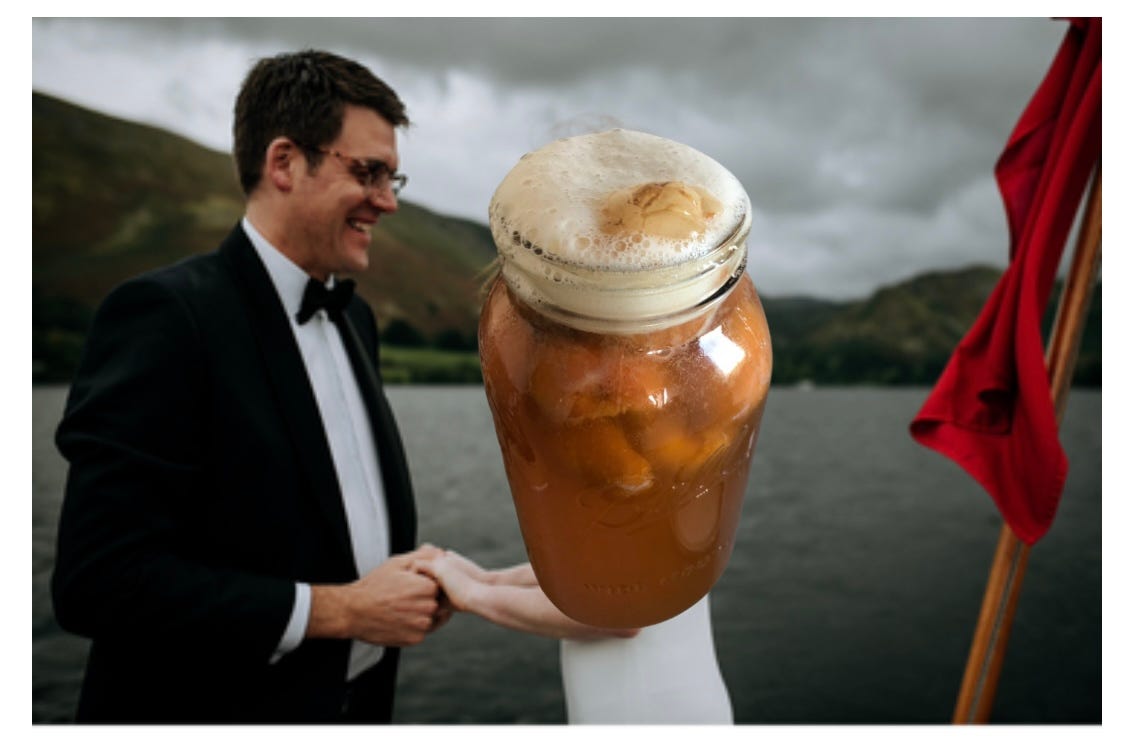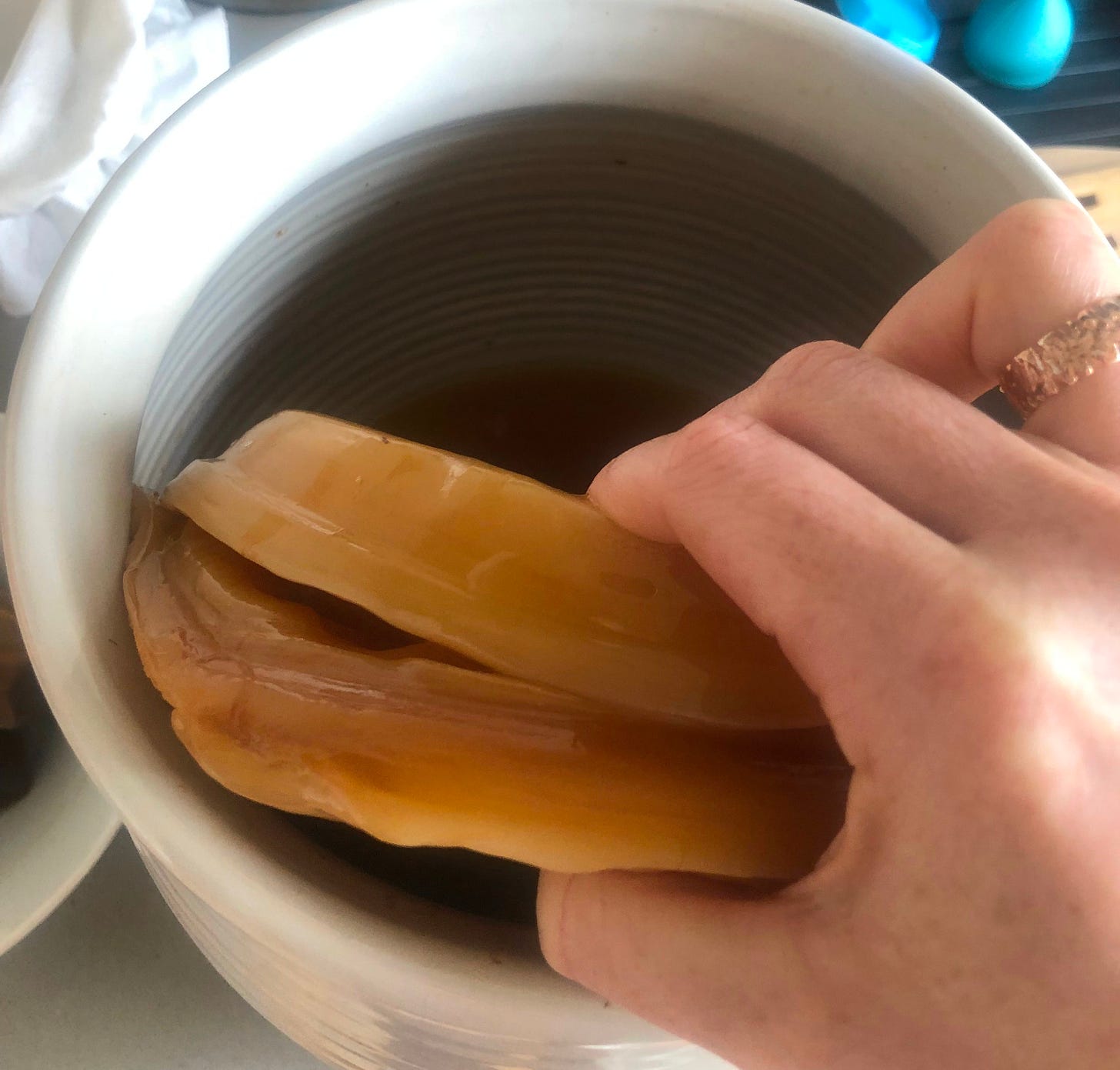Fermenting is the process of breaking (food components) down.
It’s the culinary art of encouraging tiny microbes to transform something, so that we can build it back into something better. It requires patience, specific conditions, and a steadfast belief that what you’re creating in a jar in your kitchen isn’t just a science experiment gone wrong.
If done correctly, you are creating (food) or changing something’s properties (it’s food).
Exactly one month after my wedding, I started a class on fermentation.
I didn’t see the metaphor coming. I had simply thrown myself into the twin challenges of matrimony and microbial cultivation simultaneously.
Little did I know then that I was the piece of cabbage, being reformed, renewed, injected with new life, becoming tangy and effervescent. I was a Yorkshire Tea Bag, dropped into a pot with a new, thick, rubbery ecosystem. I would become one with the SCOBY (Symbiotic Culture Of Bacteria and Yeast).
I was, in fact, on my way to becoming a SCOBY.
THIS IS A SCOBY. SORRY.
For our first lesson in fermentation, my friend Maddie and I headed to the depths of Brunswick East in Melbourne, just steps away from the McDonald’s on the corner with the big play area. The area is traditionally what you might call ‘Nouveau Crunchy’ or ‘Crusty Capitalist’, right in the sweet spot between multi-million dollar houses and the side effects of widespread meth addiction.
The venue was a shop dedicated to beekeeping, called ‘Bee Sustainable’. As if the stereotype could get more stereotypical.
(Yes, I briefly considered beekeeping, but that involves a much greater investment of time, money, and a pain threshold. But life is long, and my heart remains open.)
The crowd was a familiar tableau for anyone who frequents one-off, niche courses. It was a holy trinity of:
Mothers and daughters seeking connection.
Slightly odd individuals who you just know are regular Bee Sustainable visitors.
Those so impossible to buy for that a fermentation class was the only conceivable gift
The course itself was straightforward. We followed the instructions, started our controlled decay, and went home with some satisfyingly labelled jars. My kombucha and kimchi bubbled away in the kitchen. They fermented. They did not become delicious.
In spite of that, I committed. I purchased a 5 litre ceramic kombucha pot. I experimented with a wide range of kombucha flavours. My husband, my primary customer, would take a polite sip and say things like “it’s very lively”. Eventually he suggested that we might return to being a shop-bought kombucha family.
My fermentation journey came to an end for two reasons. First, the loss of my sole customer was a blow to my pride. Second, and rather decisively, I actually became a mother. The non-SCOBY, human kind. And it turns out that sustaining one new life makes brewing another in a ceramic jar seem significantly less appealing.
You don’t always receive the lessons you expect. Whilst I may suck at making kombucha, the hobby offered a perfect metaphor for my marriage. It’s an ongoing and delicate process. You have to be careful about the introduction of contaminants. You cannot rush it. The rewards become greater with time. And sometimes, your partner will not like your weird, vinegary concoction, and that’s okay.
My fermentation journey is complete. My marriage, like a good sourdough starter, is still bubbling along nicely.
Where is THE HIGH? The thrill of playing God with bacteria.
Physical fitness? A 5 litre ceramic jar full of liquid is pretty heavy. Muscle up.
Sense of satisfaction? If you actually make something that tastes good, and you might do eventually (I didn’t), I imagine that would be a great feeling.
Long term commitment? Fermentation is forever.






I bought Suzy a beekeepers outfit, but that’s another story